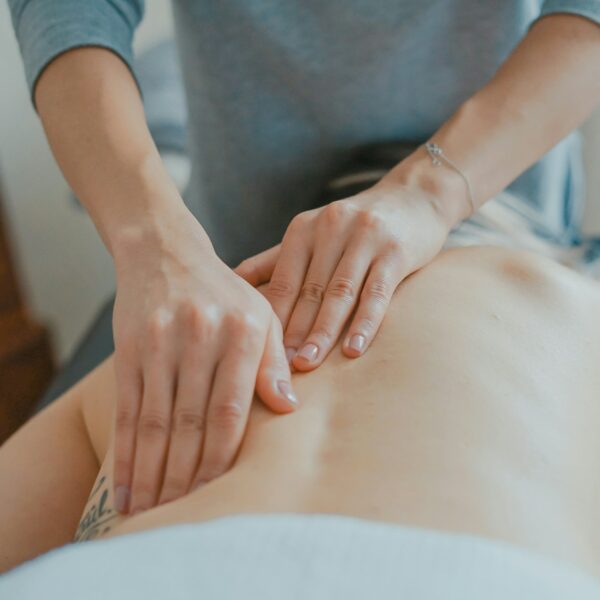
Frozen shoulder, also known as adhesive capsulitis, is one of many common musculoskeletal disorders. It’s an ailment that brings various debilitating challenges, one of the most significant being disrupted sleep.
Quality sleep is vital to the body’s natural healing processes, but getting a comfortable sleep with a frozen shoulder can be a battle.
Thomas O’Neil who is an authority in the field of physiotherapy brings a wealth of experience and expertise to the topic.
Rest assured the journey to a good night’s sleep amidst the discomfort of a frozen shoulder begins here!
Causes of Frozen Shoulder
Frozen shoulder often develops gradually, and it might be linked to several factors:
- Age and Gender: It’s most common for people aged between 40 and 60.
- Immobilisation: Periods of immobility due to surgery or injury.
- Medical Conditions: For example; diabetes, Parkinson’s, and thyroid disorders, predispose individuals to frozen shoulder.
Symptoms of Frozen Shoulder
A dull aching pain in the shoulder is the primary symptom; it will likely affect your ability to sleep and perform everyday activities. Gradually the ability to move the shoulder will become more restricted as the disease progresses.
Due to this stiffness and limited range of motion that accompany a frozen shoulder, the options for comfortable sleeping positions becomes markedly reduced. Lying on the affected shoulder is almost impossible, and finding a position that alleviates the stress on the shoulder joint is a nightly struggle.
This nightly challenge brings a level of anxiety for the discomfort that awaits. We all know that restful sleep is a cornerstone of overall health, so individuals with a frozen shoulder must seek support to begin recovery.
What Are the Best Sleeping Positions for Frozen Shoulder?
Different positions might work for different individuals, but the objective remains constant: reduce pressure and maximise comfort on the affected shoulder.
If possible, try to sleep on your side, with your unaffected shoulder down. Ensure that your neck and shoulder are properly aligned to prevent additional strain. If needed, use extra pillows to maintain alignment and offer the necessary support to the upper body.
Another option is to sleep on your back, rest your arms straight by your sides with your palms facing down. This position puts minimal amount of pressure on your shoulder and allows your muscles to gently stretch and release.
Pay attention to things such as your pillows and mattress too. Pillows must provide support to the neck and shoulders. Memory foam pillows that contour to the shape of your body can be particularly beneficial.
For individuals with severe pain, shoulder wraps or braces specifically designed for frozen shoulder can provide stability that might exacerbate pain during sleep.
Reduce Stiffness Before Bed
A word of caution: always listen to your body, avoid over-exertion, and consult a healthcare professional, like Thomas, for personalised guidance tailored to your condition and recovery strategy.
Every individual’s condition is unique, and exercises should be approached with mindfulness. Ensure you’re not pushing your body beyond its comfortable limits. The goal is to alleviate discomfort, not worsen it.
Pendulum Stretch
- Stand by a table for support.
- Bend at the waist, and let the affected arm hang down.
- Gently move your body, allowing your arm to swing in a small circular motion.
Towel Stretch
- Hold a towel in both hands behind your back.
- Using the good arm, gently lift the towel, and allow your arm to be gently stretched.
Cross-Body Arm Stretch
- Using the unaffected arm, gently bring the affected arm across the body, applying soft pressure to stretch the shoulder.
Wall Crawls
- Stand facing a wall at arm’s length.
- Slowly “walk” your fingers of the affected arm up the wall to a comfortable height.
External Rotation Exercise
For this one, you may want to use a soft object like a rolled-up towel for extra support.
- Keep the elbow of your affected arm close to your body and bent at 90 degrees.
- Gently rotate the forearm outward.
Each exercise and stretch should be performed with gentleness, always keeping in tune with your body’s feedback. The aim is to promote mobility, reduce stiffness, and foster a conducive environment for sleep. Do not push your body and aggravate the condition.
Accelerate the Healing
Recovery can be significantly sped up with the support of a professional.
Their understanding of complex musculoskeletal disorders and hands-on experience allows fast and effective healing and that’s considerate of the patient’s comfort.
The Foot and Gait Clinic in Taunton can provide the much-needed support and guidance to speed up your frozen shoulder healing journey.



